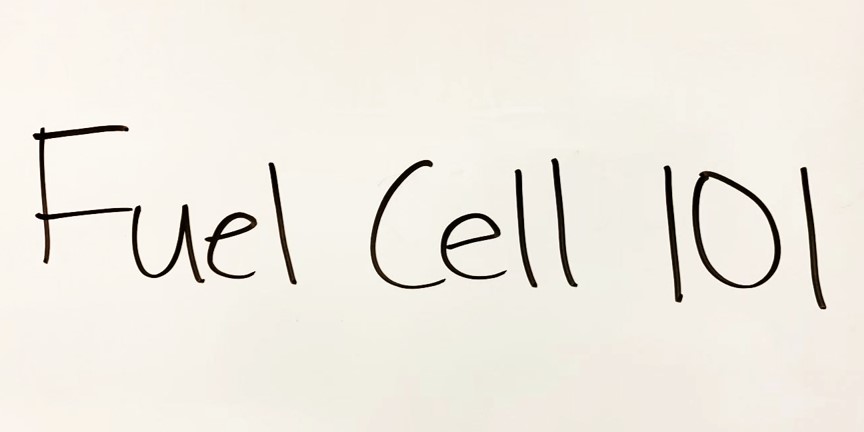We have all heard about fuel cells. But do we know how they actually work? In this post we will give you a crash course on fuel cell basics.
The purpose of a fuel cell is to produce an electrical current that can be directed outside the cell to do work, such as fueling an electric motor or illuminating a light bulb or a country. Because of the way electricity behaves, this current returns to the fuel cell, completing an electrical circuit. The chemical reactions that produce this current are essential to how a fuel cell works.
There are different types of fuel cells, and each operates a bit differently. But generally, hydrogen atoms enter a fuel cell at the anode where a chemical reaction strips them of their electrons. The hydrogen atoms are now “ionized,” and carry a positive electrical charge. The negatively charged electrons provide the current through wires to do work.
Oxygen enters the fuel cell at the cathode and combines with electrons returning from the electrical circuit and hydrogen ions that have traveled through the electrolyte from the anode.
The electrolyte plays a key role. It must permit only the appropriate ions to pass between the anode and cathode. If free electrons or other substances could travel through the electrolyte, they would disrupt the chemical reaction.
Since fuel cells create electricity chemically, rather than by combustion, they are not subject to the thermodynamic laws that limit a conventional power. Therefore, fuel cells are more efficient in extracting energy from a fuel. People can also harness waste heat from some cells to boost the system efficiency still further.
This concludes our crash course on fuel cell basics! Check out Electrolyzer Store blog next week for another interesting topic.

